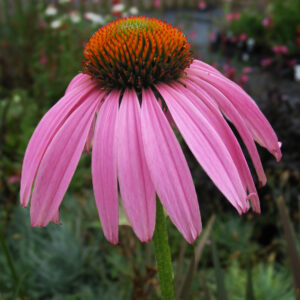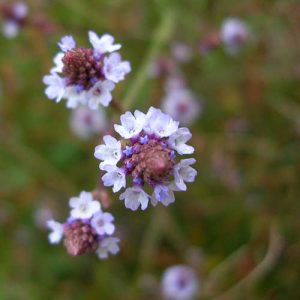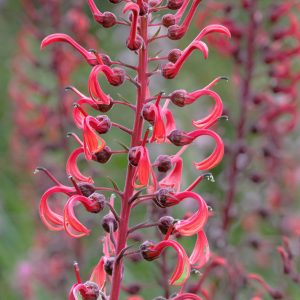- 1-9 pkts $4.50
- 10 pkts FREE
- Express post $12
Echinacea purpurea ‘Alba’
WHITE SWAN CONEFLOWER
Echinacea purpurea ‘Alba’ sparkles in the garden.
Large sunrays of snow white with showy mahogany-copper cones
With large sunrays of snowy white, reflexed petals, around showy mahogany-copper cones.
Prolific & long bloomer
Abundant white flowers bloom through from mid-summer through autumn to first frosts.
So this lovely plant well deserves the name of White Swan.
Stout & well branched stems
And the prolific flowers are borne on well branched stems, stout and strong, which do not need any staking to survive the worst the weather can throw at them.
Compact grower & elegant bloomer
Echinacea purpurea ‘Alba’ is an compact grower, with profuse, long blooming – so she is rated as one of the most elegant of all the much loved Echinacea family.
Excellent cut flowers for floristry
White Swan Coneflower gives excellent cut flowers, to use either fresh or dried.
Decorative cones are long lasting
The cones are also decorative, either left on the plant to make a show long after the petals have dropped.
Or harvested and dried for floral work.
So gardeners often leave the cones to stand through winter, providing both visual structure, and feed for small native seed eating birds such as Finches.
Hardy & unfussy to grow
This hardy native of the North American prairies enjoys Full Sun to Light Shade.
S0 she grows happily in just about any well drained soil.
And can even cope in poorer soils, including clay and rocky soils.
In fact they prefer a leaner diet and bloom better on shorter rations.
Water wise + heat & dry resistant
Once established it is water-wise plant, that needs only minimal extra watering, and can survive dry spells well.
Robustly frost hardy
Echinacea purpurea ‘Alba’ is robustly frost hardy, and can withstand temperatures dropping to well below -25°C.
That is one monster giant frost.
Also tolerates summer humidity
But it is also tolerant of humidity in the air during summer.
Low maintenance plant
Echinacea purpurea ‘Alba’ is a very unfussy, low maintenance plant to grow.
(See “Growing” section below for details).
Pests or diseases rarely if ever trouble Echinacea.
And it needs no pruning, except for cutting back the spent flower stems at the end of autumn.
Unless of course you like to leave them as winter decoration in the garden, and for the pleasure of seed eating birds. during the cold weather.
Rabbit & deer resistant plant
Rabbits and deer rarely trouble mature plants of Echinacea purpurea (no-one told the beasts that Echinacea is reputed to boost the immune system – Sssshhhhhh).
Though they may nibble on fresh shoots in a hungry year, Echinacea is generally well down on the nibbling pests food menu.
Pollinator favourite – top of the pops in autumn
Echinacea purpurea blooms are beloved by a wide range of our useful pollinators – from honeybees to solitary native bees; from butterflies to moths; from honey-eater native birds to autumn seed eaters.
The prominent central cones are rich in pollen and nectar, and at a useful time of year during autumn, when not so many other flowers are available.
Then if you do not cut all the blooms – the remaining decorative, long-lasting seed heads are a boon to seed eating birds in winter.
Quick from seed to flowers
Echinacea purpurea ‘Alba’ will flower in 11 to 15 weeks from sowing the seed.
So blooms are possible in the first year from sowing the seed
Hardy perennials
Echinacea purpurea ‘Alba’ make neat, hardy perennial clumps.
Compact 80cm. Tall in flower and cone x 45cm. Wide neat clump of foliage.
SEED SOWING ADVICE: QUICK & EASY
Suitable for beginners & kids
Sow at any time of year in a punnet indoors – whenever suitable temperatures are available (20-24°C).
OR
Sow in the garden during late winter & spring or late summer & autumn.
Sow indoors for optimum germination & fast plants: First sow the seeds in a punnet on surface of good quality seed raising mix.
Then pat the seeds gently to the surface of the mix ensure good contact.
But only barely cover the seeds with sieved mix because light is needed for germination with these seeds.
Now thoroughly moisten the punnet by standing it in a shallow water bath.
And allowing the moisture to percolate to the surface of the mix from below.
Then place the punnet in a warm, well-lit position (not in any direct sunlight).
And continue to keep moist by misting with a spray water bottle.
Temperatures of 20-24°C approx. are ideal for rapid and optimum germination.
Germination may start in just 5 days and continue up to 20 days after sowing.
Echinacea will flower in 11 to 15 weeks from sowing – so flowers are possible in the first year grown from seed.
Then prick out the seedlings once they large enough to handle.
And transplant into pots to grow on for planting out into the garden.
Seed Count: 20 seeds per pack approx.
(We always aim to exceed the stated seed count and give a generous serve).
GROWING: Echinacea purpurea ‘Alba’
– Height with flowers: Blooms over summer and autumn on strong, weatherproof stems to approx. 80cm. high.
– Width: Neat, tight, evergreen clump of foliage to a diameter of 45cm. approx.
– Position: Echinacea are hardy growers in Full Sun, though they can also tolerate and perform well in some Partial Shade. As long as they are well drained and not in damp shade.
Easily pleased, unfussy plants
– Soil: Echinacea are considered very easy to please plants.
Because they will happily tolerate poor, rocky soil, sandy or dry soils, as well as normal, average garden soil.
So they perform better when they are not overfed or pampered with rich soil.
Unfussy Echinacea can also can tolerate clay soils as long as they do not remain wet and mucky.
Plus they are tolerant of alkaline, lime soils.
– Frost: Echinacea are very frost hardy, as they can tolerate hard frosts to well below -25C.
– Humidity: Echinacea also tolerate summer humidity well.
– Water-wise: Echinacea are excellent water-wise perennials, because they have a low water need once established.
Assets in the garden
– Fragrance: Echinacea are magnificent and long lasting cut flowers, even though they have little to no scent.
– Growth: Echinacea make a neat, hardy, evergreen perennial clump.
– Bees & birds: Nectar and pollen rich cones provide much needed energy food over the warmer months for bees, pollinators and butterflies. Then if you leave the decorative cones to dry, they will also provide seed for small birds into winter.
Easy, low care
– Care: Echinacea are very easy care, low maintenance plants.
They are rarely if ever troubled by pests or diseases.
The only possible maintenance work is to harvest the flower stems for flower vases, or to tidy off the spent flower stems at the end of autumn (though leave the cones to dry into winter if you wish to attract small seed eating birds to your garden).
– Deer & Rabbit resistant: Echinacea are fortunately not particularly attractive to either rabbits or deer.
– Origin: Echinacea are native to the prairies of Eastern and Central North America, where they grow in a very wide range of conditions. This of course accounts for their hardiness and unfussy nature in the garden.
A much loved traditional & modern medicinal plant
Echinacea purpurea was always an important ingredient in the medicine chest for native American First Nation people. They used it to treat wounds and infections, and especially to treat spider and snake bites (though I think an anti venom injection is preferred today!!!).
And Echinacea purpurea has once again become a popular as a modern herbal supplement. With many believers in its efficacy for strengthening the immune system.
So it is now grown as a commercial crop for herbal medicine companies.
And a pet Hedgehog
The botanical name for Echinacea comes from the Greek for prickly Hedgehog. Of course this refers to the decorative cones. But don’t worry – the cones are not prickly and just irresistible to pat like a pet Hedgehog.
Click here for Open Gardens Information
https://www.gardivalia.com.au/open-gardens
Click here to go back to Seeds Shop
https://www.seedscape.net.au/shop/
Related products
-
Add to WishlistAlready In WishlistAdd to Wishlist
-
Add to WishlistAlready In WishlistAdd to Wishlist
-
Add to WishlistAlready In WishlistAdd to Wishlist
-
Add to WishlistAlready In WishlistAdd to Wishlist





